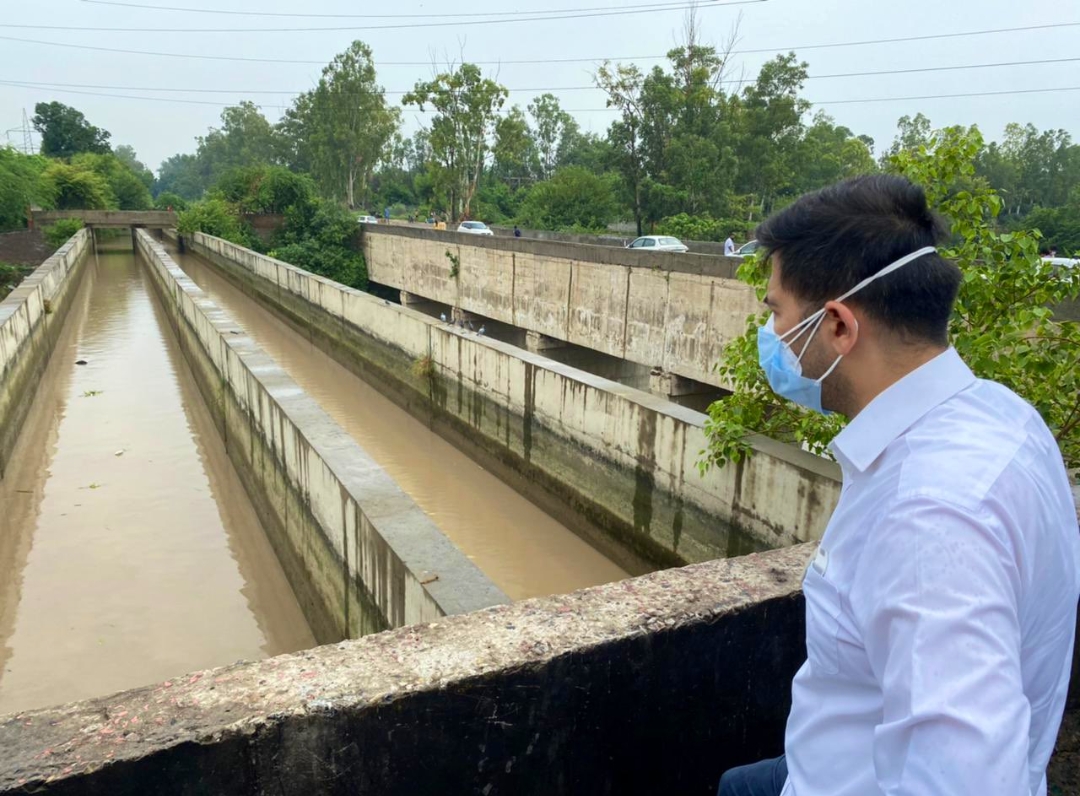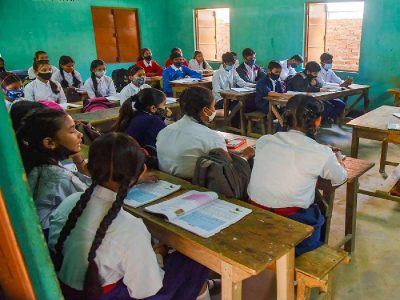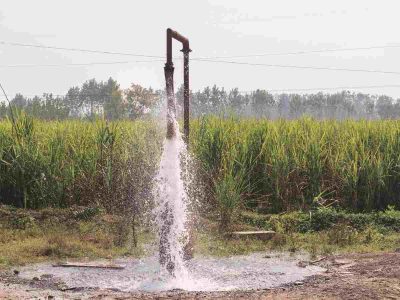On March 25, officials posted at the KN Katju Marg Police Station were in for another dumpster dive in the dark underbelly of Haiderpur Water Treatment Plant in Rohini.
The police officials bore the brunt of fishing out the moth eaten, unrecognisable and decomposed corpse of a presumably 35-year-old man with only his teeth left as the humanising factor.
“It has become regular practice for us now,” said an official at the plant, referring to the phone calls they have had to make to the police to inform them about any dead body that they see inside the canal. Since January 2023, the Haiderpur Water Treatment Plant has seen 67 unidentified dead bodies surface according to data accessed through Zonal Integrated Police Network (ZIPNET).
Each police official is assigned a task to compile and look for any traceable mark on the deceased person, when fished out, to help in tracking down the next of kin, and put an identity to the unknown face.
“Most of the dead bodies float and reach Delhi from Haryana, Uttar Pradesh and Uttarakhand, because of the canal. It makes the process much more tedious than it has to be. This also means that we can seldom identify the deceased which float and reach our jurisdiction. Even if it were possible to trace them, their bodies and their faces get so decomposed that they barely look human anymore,” said the police official.
The Haiderpur Water Treatment Plant, unlike other filtration units, has a canal running through it which encompasses the Western Yamuna Canal region. Also referred to as Yamuna Nahar, the area comprises parts of Haryana, fringes of UP, and Delhi. The part of the canal is also referred to as the Munak Canal whose 102 km long aqueduct flows from Haryana to Delhi, starting from Yamunanagar.

“Bodies keep floating across and into the canal here in Delhi. We just take a peek at the dead bodies which float across, and almost like routine we ring the police up. We just let them take the lead from then onwards,” said an official at the Haiderpur Water Treatment Plant.
The plant in Rohini is Asia’s largest with a total capacity of 200 million gallons of water per day. The plant is divided into two independent treatment plants of 100 MGD each. The water, essentially from the Munak Canal, falls into Delhi Jal Board supplying the areas of Pitampura, Shalimar Bagh, Saraswati Vihar, Paschim Vihar, and North West Delhi to approximately 18 lakh people.
In the past year, only one body has been identified. In October 2023, the dead body of a man in his mid-20s was recovered from the water treatment plant, with his hands and feet tied together. The authorities formed multiple teams to find the family of the deceased who was later identified as Amit (last name redacted), a resident of Khadlana village in UP’s Saharanpur district. The “blind” murder case was solved within four days whereupon the authorities apprehended Sunil, the elder brother of the deceased, Vishu, a relative of the deceased and a resident of Panipat in Haryana, Mohit, a distant relative of the deceased, and a juvenile, in relation to the case.
Much like this case, multiple such instances of blind murders have surfaced at the plant. However, police personnel have stated that many of the deceased who come afloat are often victims of accidents, or those who fall into the canal.
“We can never jump to conclusions especially when it comes to the unidentified dead bodies. We have seen dead bodies of victims who may have fallen into the canal, may have been victims of suicide. Sometimes these may have been caused through drunken stupor. We can never jump to conclusions. Only under very specific circumstances with clear indicators do we file a case of murder,” said a senior police official at the KN Katju Marg Police Station.
How many dead bodies did the police recover
According to ZIPNET data, from January 2022 to January 2023, the police station had recovered 48 dead bodies from the water plant, and in January 2023 to January 2024, the number of unidentified dead bodies increased to 53.
During the same time between 2023 to 2024, Rohini district had seen 138 unidentified dead bodies being recovered, now identified through their respective unique UIDB database IDs. On the other hand, from 2022 to 2023, the district saw recovery of 163 unidentified dead bodies.
A hub for unidentified dead bodies
However, according to the Deputy Commissioner of Police (DCP) of Rohini, Guriqbal Singh Sidhu, the recoveries from the water treatment plant in the district are mostly due to the diversion of the water from the Samaypur Badli side in the Outer North district.

“There are two canals that connect Delhi to the Munak Canal. One is the kutcha canal and the other is the pucca canal, with the former being connected with Badli while the other joining up with the Haiderpur plant here. The dead bodies which are technically supposed to land in Badli, also get diverted to our end. It is mostly because of the lack of filtration nets because if there would have been nets then they would have stopped at the district borders itself,” he said.
Despite witnessing a drastic decline in the number of corpses recovered, the number at Haiderpur Water Treatment Plant has increased ever so slightly. A senior police official accused the authorities in neighbouring Haryana of being tacit in not taking efficient action to stop the flow of dead bodies.
“The Munak Canal has nothing in place to check or stop the flow of the current. No barrages and no filtration nets, which means that the water does not stop anywhere while passing through almost three states, starting from the Yamunanagar border area of Uttarakhand, Haryana and UP. This makes the search very difficult, where we cannot even zero in on a particular place,” he said.
How do other police ranges fair
From 2023 to 2024, the most number of unidentified dead bodies were recovered by the Railways range at 824, while the North range followed at 663 dead bodies. The Central range recovered 315 unidentified dead bodies, the third highest, among the other districts.
The police official further accused authorities and residents in Haryana of breaking the filtration nets which has led to the dead bodies finding their way to Haiderpur in Delhi. “I have put forward requests to the Haryana Police as well in Panipat and Sonipat, to help in mending the nets. I have also requested the government to check the number of nets broken and successively, help in mending them. The authorities and the residents have broken the net to reduce their work. It’s inhuman, to say the least,since the deceased who turn up here, they belong to the lowest social strata with no one to ask about them,” the official said.
The senior police official added that since 2009, the incoming rate of the deceased has increased exponentially. “Before 2009, the filtration nets were intact but following that year, we started receiving many more corpses on our side. We went to take note of what caused the increase and found that none of the filtration nets were there where they were supposed to be. All of them had either been broken or removed,” he said.
How are bodies identified
According to police officials, the process of identifying dead bodies is multifaceted and according to a set Standard Operating Procedure. Initially, the area where the body is found is cordoned off, to prevent contamination of evidence, then the Investigating Officer (IO) is tasked with filing the inquest form or panchnama which bears all the details regarding the deceased. After recovering the details regarding their outfit and any discerning features, police officials flash the said details across television screens and send them to all districts of the country and the National Crime Record Bureau (NCRB) along with the photographs for information.
Moreover, factors such as the state of the deceased’s organs and skin also play a definitive role in the identification process.
 Presently, as of April 2, the police have recovered 4,620 unidentified dead bodies across the national capital since January 1, 2023. On the other hand, from January 1, 2022, to April 2, 2023, Delhi Police recovered 5,036 unidentified dead bodies, according to ZIPNET.
Presently, as of April 2, the police have recovered 4,620 unidentified dead bodies across the national capital since January 1, 2023. On the other hand, from January 1, 2022, to April 2, 2023, Delhi Police recovered 5,036 unidentified dead bodies, according to ZIPNET.
According to the ZIPNET data for January 1, 2023, to January 1, 2024, around 54 unidentified dead bodies were found in drains across Delhi, while 824 dead bodies were discovered at railway tracks, and 68 bodies were recovered from water treatment plants across Delhi.





